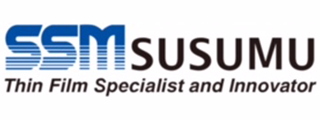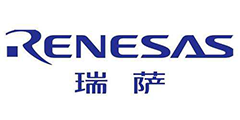- Ameya360 Component Supply Platform >
- Trade news >
- Redpine Flexes ‘Lowest-Power’ Wireless MCU
Redpine Flexes ‘Lowest-Power’ Wireless MCU
The IoT market has long proven elusive for its myriad main-chancers. Lately, however, some of those suitors are feeling comfortable enough to proclaim, at a recent industry gathering, that IoT is finally what’s happening.
Moreover, the IoT market “is expanding,” said Tim Vehling, president of Redpine Signals, in a recent interview with EE Times.
Clearly, there is no shortage of wireless chips on the IoT market, with many chips today claiming to offer both low power and multi-protocol support. But signs of a market shift on IoT are visible. Vehling observed many IoT device designers are now looking for combo wireless chips capable of supporting “a huge throughput and a longer range at a very low power.”
Think battery-operated IoT devices, he said. Connected devices like wireless video (home surveillance, for example) and drones fall into that category. For IoT apps involving video, Wi-Fi is critical.
Rather than assuming the presence of a smartphone to which Wi-Fi connectivity can be assigned, IoT system designers now want a big-pipe Wi-Fi- combo chip operating at a very low power. Redpine is rolling out Tuesday (Dec. 12) wireless combo chips featuring advanced security with integrated Bluetooth 5, dual-band Wi-Fi, 802.15.4/ZigBee/Thread.
Ultra-low power
Separating Redpine’s new Wi-Fi combo chips from similar IoT chips is its claim to absolutely ultra-low power. At Redpine, “We are confident that we are offering the industry’s lowest Wi-Fi standby associated current of less than 50uA,” said Vehling. This represents a significant reduction of power, he said. The standby capacity of Redpine’s own previous version of Wi-Fi-capable IoT chip was 1 milliamps. Redpine's new chips are manufactured by using a 40nm process technology.
Vehling cited Texas Instruments and Cypress Semiconductor as Redpine's closest competitors, but in terms of standby power, he believes that Redpine offers "the lowest based on anything that has been publicly announced by other companies."
Cypress, for example, announced last September for IoT market a new Wi-Fi/Bluetooth combo chip, called CYW43012, using 28nm process technology. The chip consumes "about 0.003mA on a 3.6V rail and 90uA on a 1.8V rail in an associated Wi-Fi standby state," according to the company.
Integrated into Redpine’s new multi-protocol wireless connectivity chips are dual-band (2.4/5GHz) 802.11abgn Wi-Fi, Bluetooth 5 and 802.15.4 for Thread or ZigBee connectivity.
Support for multiple wireless protocols is a key to link IoT devices to the cloud, and for connecting other devices and provisioning. Redpine claims it has also paid special attentions to security, enabling IoT device makers to provide multiple levels of security — from a secure bootloader to a tamper-resistant core and support of security on the network.
Redpine’s new wireless solutions come in two separate parts numbers: RS14100, the industry’s lowest-power multi-protocol wireless MCU, and RS9116 available in both hosted and embedded configurations.
Unlike Redpine’s previous wireless chips designed to talk to a host MCU by other vendors, RS14100 is the company’s first wireless MCU. The RS14100, for example, features an ARM Cortex-M4F that can operate up to 180 MHz and includes up to 4 MB of flash for applications.
The RS14100, a wireless solution tightly integrated with MCU, becomes particularly important when system designers develop battery-operated IoT devices in which size and power matter.
Gear-shifting
In reference to multi-protocol wireless MCUs, Vehling observed that some competitors use two ARM cores – Cortex-M4 and Cortex-M0 – for high- and low-power operations, respectively. In contrast, “We are using a single core [M4] only, with its microarchitecture gear-shifting,” he noted. “It turns out that our MCU functions as power efficient as M0.”
Vehling added that Bluetooth Low Energy (BLE) 5 power in Redpine’s Wi-Fi + BT modules “is better than standalone BLE 5 devices.”
Notably, Redpine offers software features critical to both microcontroller subsystems and wireless subsystems. Aside from FreeRTOS with integrated wireless libraries (customers can use other RTOS, too), it offers Flash In-Application Programming andIn-System Programming, for example.
For wireless subsystems, it offers all the software including Wi-Fi stack, BT stack/profiles, a Thread stack, ZigBee PRO stack/profiles and a networking stack. Its operating modes include: Wi-Fi client, Wi-Fi access point, Wi-Fi Direct and Dual Mode BT5, simultaneous client and access point, Wi-Fi client + Dual Mode BT 5, Wi-Fi client + dual mode BT 5 + Thread/ZigBee Pro.
Other advanced software features include Wi-Fi and BLE Apple Homekit, Thread, ZigBee PRO over 802.15.4, security and wireless provisioning and firmware upgrade.
Voice activated
More features of the RS14100 are an “always-on” sensor-hub with hardware accelerators for voice-activity detection, vector filtering, interpolation and matrix multiplication, sensor data collection and capacitive touch, according to Redpine. Hence, IoT device designers can develop new applications like voice triggers for primary battery-operated devices.
Redpine’s RS14100 and RS9116 SoC and modules are sampling now. Volume production is scheduled for the second quarter of 2018.
Avoiding heavy hitters
Obviously, the Wi-Fi-Bluetooth combo chip market has long existed. Redpine’s strategy, however, has been “avoiding market segments such as smartphones and enterprise applications where typically heavy hitters like Broadcom and Marvell have dominated,” said Vehling. “We are focused on “size, cost and power-constrained IoT market.
While Redpine might not be a household name among consumers, the company is known within the electronics industry for low-power wireless solutions, according to Vehling.
Since its inception in 2001, the privately-held company has devoted itself to the home-grown development of wireless solutions — ranging from Wi-Fi and real-time location to Bluetooth, ZigBee and 802.11p for vehicle-to-vehicle/roadside communications. “We develop both software and hardware, and they are all home-grown,” said Vehling. Redpine also tries to be flexible. “We provide both modules and chips.”
Redpine, headquartered in San Jose, has a heavy presence in Hyderabad, India, for its R&D activities.
Redpine is not a VC-funded company, Vehling pointed out. That might partly explain the company’s resilience, longevity and quiet success, he added. Without VCs breathing down his neck, Redpine’s CEO Venkat Mattela has had the time to develop a long-term vision and execute his strategy.
Vehling joined Redpine about a month ago. Prior to the move, he was vice president of the mobile division at Synaptics. Describing Redpine as now moving “into a growth phase,” Vehling sees his role in leading “a larger consumer style push” on the market.
Online messageinquiry
- Week of hot material
- Material in short supply seckilling
| model | brand | Quote |
|---|---|---|
| CDZVT2R20B | ROHM Semiconductor | |
| BD71847AMWV-E2 | ROHM Semiconductor | |
| RB751G-40T2R | ROHM Semiconductor | |
| MC33074DR2G | onsemi | |
| TL431ACLPR | Texas Instruments |
| model | brand | To snap up |
|---|---|---|
| BU33JA2MNVX-CTL | ROHM Semiconductor | |
| STM32F429IGT6 | STMicroelectronics | |
| IPZ40N04S5L4R8ATMA1 | Infineon Technologies | |
| TPS63050YFFR | Texas Instruments | |
| ESR03EZPJ151 | ROHM Semiconductor | |
| BP3621 | ROHM Semiconductor |
- Week of ranking
- Month ranking
Qr code of ameya360 official account
Identify TWO-DIMENSIONAL code, you can pay attention to


Please enter the verification code in the image below:






















